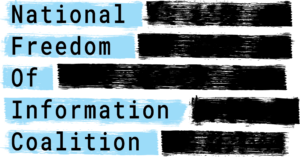
Orlando Sentinel by Trevor Fraser
October 10, 2017
In the Grand Canyon, Arizona has a natural wonder which is in kind absolutely unparalleled throughout the rest of the world,” said President Teddy Roosevelt after visiting what would become a national park in 1903. “I want to ask you to keep this great wonder of nature as it now is … You cannot improve on it.”
Writer Kevin Fedarko agrees. “The thing that makes the Grand Canyon unique … is that the landscape is stripped bare and you’re able to see what geologists call deep time exposure — 26 layers of rock dating back 1.7 billion years into the past,” he said by phone from his home in Arizona.
The Pittsburgh native will be Wednesday at the Orlando Museum of Art as a guest of the Florida First Amendment Foundation. He will discuss his article, “Are We Losing the Grand Canyon?” which appeared in the September 2016 National Geographic. (Lecture begins at 7 p.m. Tickets are $50. Details at floridafaf.org.)
The article detailed Fedarko’s trek over the course of more than a year to hike nearly 800 miles through the canyon. The journey took him in sections over raw land with no designated path.
“There is no trail that will enable you to start at the east end of the canyon and walk to the west,” said Fedarko, 52. “It has to be bushwhacked.”
Fedarko first developed his connection with the Grand Canyon after visiting in 2004. He spent six summers “attempting and failing to become a river guide,” he said. Ten years later, he wrote “The Emerald Mile,” a book that details the story of the 1983 attempt to set the speed record for boating down the canyon section of the Colorado River.
What many Americans don’t know, according to Fedarko, is that the canyon might not be the same forever. “People think of our national parks as sort of sacrosanct and inviolable and protected in perpetuity,” he said. In reality, they are “literally surrounded by development threats at every cardinal point of the compass.”
Fedarko points to proposals for uranium mines and a tourist tramway with a restaurant. He also notes a current intrusion: the daily helicopters that interrupt the tranquility of the monument.
“The longer I spent in the canyon … the more convinced I became that the most profound and least appreciated and most fragile treasure the canyon contains is not visual; it’s auditory,” he said. “There is a depth and a density of silence that you’re capable of experiencing unlike anywhere else on Earth.”
The reasons for preserving the canyon go beyond environmental impact, argues Fedarko, who once worked for Time magazine and outdoors activity publication Outside.
“There’s a bunch of utilitarian arguments that can be invoked, but at the real center of it is that these are places that hold spiritual value for us, and the spirituality is something we only dimly grasp,” he said. “What the Grand Canyon does more than any other landscape is impart a sense of humility.”
He asks that we consider special natural places close to home, such as Orlando Wetlands Park and the Everglades. “If the Grand Canyon can’t be protected from a tramway, a restaurant, a sky full of helicopters and a bunch of uranium mines, what possible chance to those places have?” [READ MORE]
